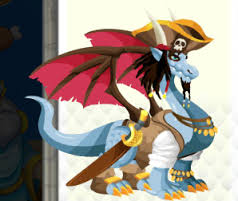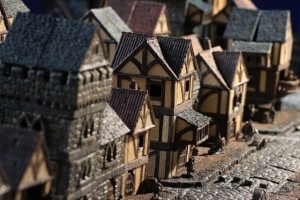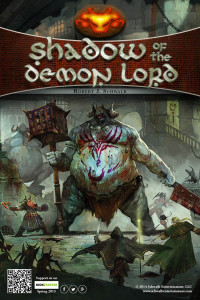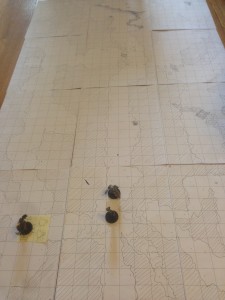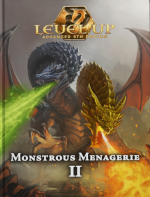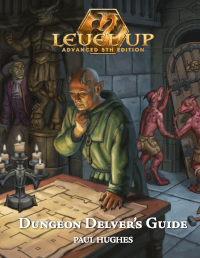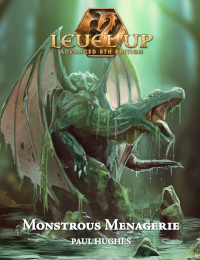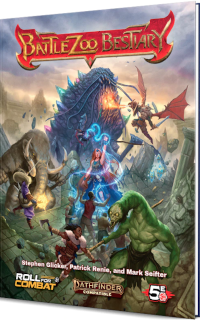The Joesky Tax was a cool OSR idea: for every blog rant, you are invited to create some D&D game content. But how well does it work? When someone is coming down from an impassioned rant, how good are they at taking a left turn into creativity?
A few months ago I googled “joesky tax” and looked at the top 50 results. I made a note of my favorites, and I actually managed to use a few in games. Here are the first dozen of the 25 or so entries I saved for future use. Blogs tend to disappear over time, so I figured I’d preserve these against disappearance. Already some of these original posts are gone.
Save Vs Poison, apologizing for “uncharitable thoughts:”
This is an old-school-deadly cursed ring, but it unfolds its creepiness slowly so a smart player has plenty of time to look for a cure. Here’s the horrifying endgame:
A small, irregularly shaped ring made of what appears to be purplish chitin. It does not radiate magic. If worn, the character feels a brief stinging sensation, after which he can detect magic at will. In addition, he gains infravision as a dwarf, and if he already possesses infravision, the range is doubled.
If removed, the ring will crumble to dust. If left on, it crumbles after 1d3 days, although the wearer will find that his powers remain.After 3d4 days, the wearer can comprehend languages.
After another 2d4 days, the character has ESP, which functions up to three times per day. At this point, strange dreams of bizarre planes and distant planets begin to trouble him.
After another 1d4 days, the character gains 1d4 points of Intelligence. One axis of his alignment changes randomly, at the DM’s discretion. The character becomes ill-tempered and has frequent headaches.
Finally, after a final 1d3 days, the character dies as a purple, centipede-like creature emerges from his head in the dead of night and slips away. After 2d6 days of gorging itself on the latent psychic energies of nearby creatures, it curls up into a ring-like shape and enters a torpor.
pipemaze.com, ranting about printers:
Thirty things that can happen in the dark. The original post is gone. Here are the two that made note of for my own use, and one that I won’t use but that amuses me nonetheless:
2. A light too dim to have been seen by torchlight is visible in the distance.
8. Your most-certainly-unmagical weapon begins to glow.
27. Something eats a retainer’s eyes, and departs.
James Mishler, apologizing for answering one of those game surveys, came up with 10 dungeon features. My two favorites:
6. The yawning carved mouth, complete with eyes and nose and ears, that leads into the corridor is normally quite unremarkable, but when an elf or half-elf passes beneath it, the large nose twitches and sneezes, exploding a gross amount of snot that acts as per a web spell centered under the nose of the face. The thunderous sneeze also has a 3 in 6 chance of attracting wandering monsters.
10. The holder of this small magical box can, with a successful bare-handed melee attack, attempt to take out the heart of a human, demi-human, or humanoid victim. The victim must make a save versus Magic; if the save fails, the holder rips out their heart, though they do not die. The heart is then placed in the box, and the one whose heart has been stolen is under the effect of a charm person spell. The holder of the heart can tell where the victim is and what they are thinking whenever the heart is held, and with concentration can mentally communicate with the victim at any distance. The holder of the heart can kill the victim any time by simply crushing the heart or otherwise destroying the heart. While he is missing his heart, the victim gains a +4 bonus to save against all mind-effecting spells cast by anyone other than the holder of the heart. The heart can later be placed back in the victim with no physical harm done. These boxes are usually found in groups of 1d6; there is a 1 in 6 chance per box that it already holds a heart.
This blog is private now.
Game Over is a) responding angrily to someone else and b) musing on the fundamental nature of RPGs.
I usually find both of these exercise tiresome but, even without the Joesky tax, this is a pretty convincing post (D&D is not player vs DM, it’s player vs. system with DM as matchmaker).
The North Star is a rapier forged from meteoric iron by a Celestial wizard. Besides just hitting things, it acts as a compass (put it on the ground, it’ll always spin to point north), an aid to divination (while you’re carrying it, you don’t need to speak or move your hands to cast Divination/Heavens/other future-seeing magic), and it also unsettles fairies, demons, and anything else that has trouble with cold iron.
In D&D terms, it can Turn fairies and demons (possibly of Type lower than the bearer’s level) as if they were undead; in Warhammer FRP, it causes fear in daemons, dryads and suchlike, even if they’d ordinarily be immune.
I used the North Star sword in a D&D space game. It’s especially well suited because the PCS CAN FLY TO THE NORTH STAR and now have a pretty compelling DM hint to do so. What’s there? It must have world significance, because navigating by the North Star is a common and symbolic act, and such acts have power in D&D. Sea captains are essentially worshipping whatever entity lives at the North Star.
The players didn’t make it to the North Star, which was a relief, because I couldn’t figure out what was there.
Legacy of the Bieth, apologizing for nothing in particular: an encounter table.
1 Herd Animal
2 Wolfpack
3 Frost Giant
4 Sabertooth Tiger
5 Mammoth
6 Remorhaz (Polar Wurm)
7 Berserkers/Nomads
8 Arctic Owlbear
9 Frost Walkers
10 Neanderthals
11 Forest Spirits
12 Nehwon Behemoth
13 Invisible Manta Fliers
14 Ice Gnomes
15 Snow Trolls
16 The Snake Demon from the LotFP Cover
17 Frost Elves
18 White Sybil
19 Yeti Cultists
20 Lost Caravan
Again, I used this in my space game, as the random encounter table for the solar system’s frozen planet. The highly capitalist players ended up convincing the (3) frost giants, in exchange for the totally novel gift of fire, to farm (6) remorhaz to supply exotic meat.
JOESKY TAX FOR MY EARLIER POST OF FRUSTRATION
The Segmented Worm
HD: variable. divisible by 3 is usually good.
AC: Up to 3HD=as leather+shield, Up to 6HD=Chain+Shield, over 6HD=Plate+Shield
Attacks/Damage: 2 Mouths, 1d8 per 3 HD (but see below)Ok, so when you have this monster set up, roll it’s HD and arrange them as rolled in a line. the actual dice, yes. This represents the Segmented Worm. Smaller HP on the HD are thinner parts of the Worm. You should describe this. When the worm takes HP damage, ask where the character is aiming for. This thing is big by the way, not purplewormfuckitseatingmehuge though. So, when it takes enough damage on one part, remove that HD, that part is severed and dead. The worm always has a mouth at both ends, even if the end is severed.
Fun part: if a non-end piece is killed, the worm splits into 2 (or more) worms. Move the parts of the worm (remember i said dice line!) away from each other and track the 2 seperate worms, increasing if the PCs keep splitting it. A single lone segment only has one attack and rolls around like a pinball.IF YOUR PLAYERS ARE BEING UNIMAGINATIVE OR LAZY DOUCHES THEN ROLL RANDOMLY FOR WHAT ONES THEY HIT.
Dyson muses about the abuses of the OSR.
Blood Charm
When activated, the wearer immediately takes 10 points of damage (which can be cured or healed normally). Any time thereafter (while the charm is still activated), the wearer can regain those hit points from the charm with a thought. If the charm is deactivated with the hit points still in it, they are lost.
I like this, but how do the players know its power? why don’t they just say, it bit me, and throw it away? I decided to have it switch from red/white to show whether it’s charged, and have it engraved with the message, “pay the price, then ask for the reward”. Then I forgot to give it as treasure.
Gregor of Red Moose Games just says he’s overdue on his joesky tax.
He has illustrations and full 3e-style stat blocks, which you should look up if you want to use the monsters. I’m copying the descriptions, which are pretty cool:
The Etherfish
The Etherfish look like flying, translucent folds of gelatinous flesh, pulsating with alien colours. From the mass protrude a number of tentacles. The Etherfish haunt a parallel dimension and occasionally break through where the barrier is thin. They always move to kill, with unknown motivations.Hollow men
Hollow men resemble normal humans, with porcelain skin, except they’re empty inside. Hollow men can sniff out gold and other treasures and will attempt to attack, subdue and the rob anyone carrying such valuables. Once they lay their hands on the treasure, they will proceed to eat it. A defeated Hollow man will often shatter like a cross between a pinata and a piggy bank.Crystal spider
These spiders are the size of large dogs. Their bodies look like large crystals and the bodies of their falling victims are covered in crystalline formations, in which their young incubate.
I populated my solar system’s Venus equivalent with all these creatures, plus giant sentient trees, plus sea monsters with mile-long necks. My players found the planet eerie and disturbing and will not return, not for all the gold in the hollow men.
Middenmurk says he doesn’t like censorship.
Reinhardt, a Pure White Fox as old as the hills who sleeps constantly in a sack, can usually be relied upon to know the way (1-3 on d6).
This is such a great treasure! It has a fun non-combat utility and it has personality that transcends its function.
Chris of Vaults of Nagoh is paying the tax for answering a Zak questionnaire.
Spell: Deliquescent Transition (Wiz2)
Caster’s body, clothing and held items melt into a varicoloured fleshy ooze. In this form the caster may squeeze through any non-air/watertight space at 1/2 normal speed. Yes, they can climb walls and ventilation pipes. 1 Round to dissolve flesh, 1 round to travel, 1 to reform. While in ooze form caster is AC 9[10], no Dex bonus.
Additional complication: encountered dungeon oozes think the caster has a purty mouth.(yeah, like a potion of gaseous form, only less so.)
1d30 is bugged by wordpress.
The Diamond Sniffer of Dumathoin
Appearance: Hollow silver nose designed to be worn over your own nose. It’s bulbous and its nostrils flare imperiously.Function: When pressed to your face it grabs onto your nose and settles over it. You can breathe normally. You now smell various gems and metals the same way you would have normally smelled pleasant or obnoxious odors. You can tell the difference between metals, even ones coated or alloyed, to within 1% of metal content if you get a good noseful.
I gave this as a treasure in a game: there was a lot of prospecting that day.
The XP Experience, apologizing for previous posts maybe?
You have a Knife or Dagger, a Melee Weapon of your choice, and a Backpack. If you have any faith in any God or Godling, you may have an appropriate Holy Idol. You also start with 1d10+CHA sp in cash.
Roll 1d30 on this table until you get the same result twice or the table instructs you to do otherwise.
1. Shield or Helmet (+1 AC) or a Cloak
2. Leather Armor (+2 AC) or a Cloak
3. Studded Leather/Ring Mail Armor (AC +3), Leather Armor, or a Cloak and roll 1d20+10 for all further rolls on this table
4. Scale Mail (AC +4), Leather Armor or a Cloak and roll 1d20+10 for all further rolls on this table
5. Chain Mail (AC +5), Leather Armor, or a Cloak and roll 1d20+10 for all further rolls on this table
6. Banded Mail/Splint Mail (AC +6), Leather Armor, or a Cloak and roll 1d20+10 for all further rolls on this table
7. Plate Mail (AC +7), Leather Armor, or a Cloak and roll 1d20+10 for all further rolls on this table
8. Light Crossbow w/ 2d6 Bolts
9. Roll under CHA on 1d20. If you fail, take any one thing and continue rolling; if you succeed, choose a number of things off this list equal to the difference by which you succeeded on the roll then stop.
10. Mirror or 10′ Pole
11. 100gp or or Thieves’ Tools
12. 2d8 Torches and 3d8 Tindertwigs
13. Rope (50 feet)
14. Grappling Hook
15. Bedroll
16. 1d4 hand fulls of Caltrops or 10′ Chain
17. Melee Weapon +1 of your choice, it may be throwable
18. Short Bow w/2d12 Arrows or Sling w/ 2d12 Bullets
19. Lantern with 2d4 Flasks of Oil, and Flint and Steel
20. 2d8 days Rations
21. Hammer and 2d6 Door Spikes
22. Wineskin (full of Wine or Water)
23. Crowbar or Sledge Hammer
24. 1 Small Black Cylinder of the Unknown or 1d3 hand fulls of Dust of Petrification
25. Je’zail or Isib’hamu (flint or wheel lock rifle or pistol) w/ enough Powder and Shot to fire 2d6 rounds
26. 1d3 pinches of Powdered Ogre Tusk (+1d4 STR for 1d6 rds, then make CON save or suffer 1d6 HP)
27. 1d4 Healing Poultices (heal 1d6, or allow a poison or disease save, requires 1d6 turns to take effect)
28. Golden Signet Ring of unknown value with little secret compartment
29. 1d8 Thunderstones or 1d6 Heatstones
30. Piece of Jewelry worth 1d6x50 gp
That’s about half of the Joesky-tax ideas that I harvested for my own use. I’ll follow up soon with the other half. Overall grade: pretty high-quality items, spells, and monsters here. If these ideas were actually generated as apologies for ranting, then the rants are amply paid for and the Joesky tax is doing its job.

